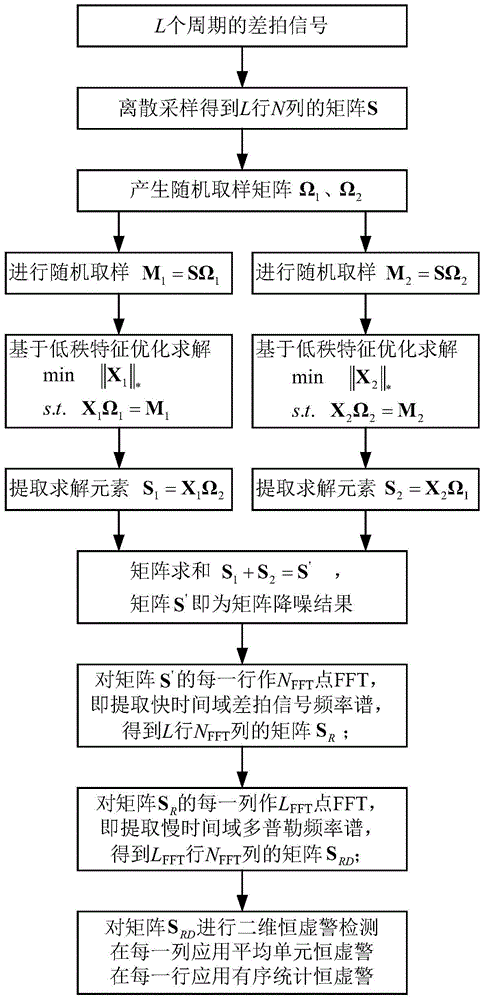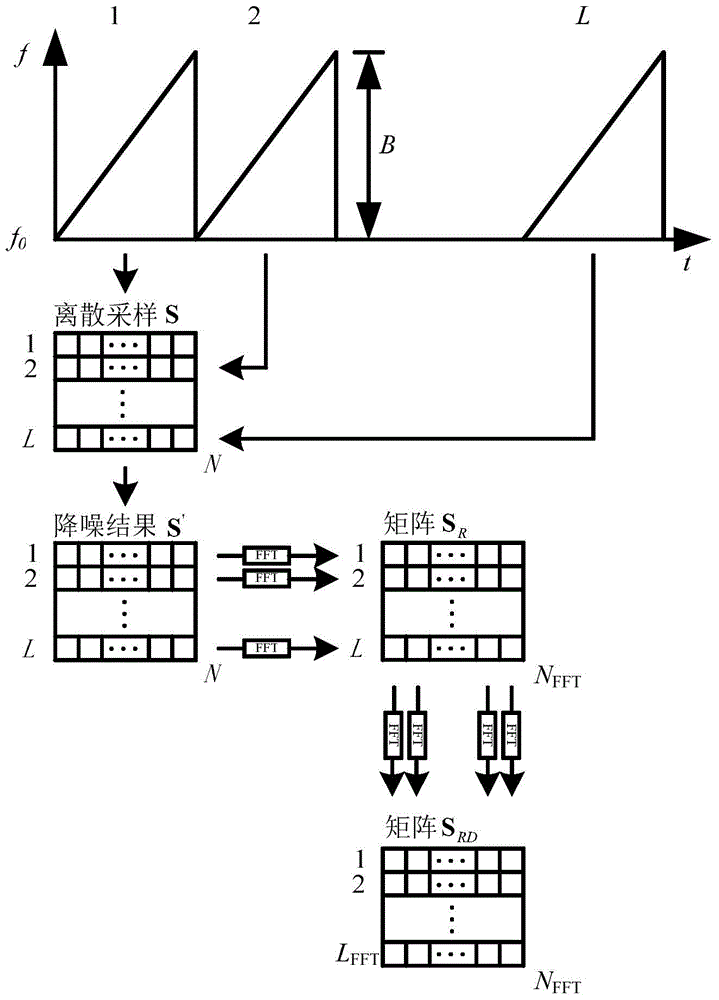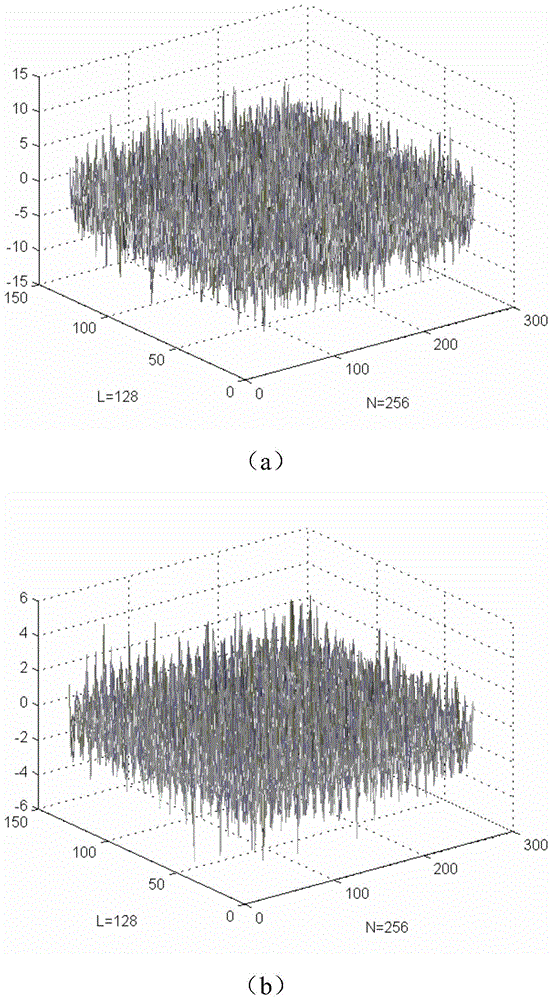Low-rank characteristic-based frequency modulation sequence matrix noise reduction and target detection method
A technology of target detection and sequence matrix, which is applied in the field of radar, can solve the problem that the improvement effect of signal-to-noise ratio is not obvious, and achieve the effect of improving signal-to-noise ratio and noise estimation
- Summary
- Abstract
- Description
- Claims
- Application Information
AI Technical Summary
Problems solved by technology
Method used
Image
Examples
Embodiment Construction
[0045] The present invention will be further described in detail below in conjunction with the accompanying drawings and embodiments.
[0046] The multi-period FM sequence echo signals are mixed down to the baseband to obtain multi-period beat signals to form a two-dimensional matrix. According to the low-rank feature of the signal, the invention can apply the matrix filling theory to optimize and solve the kernel norm of the matrix, realize the noise reduction of the two-dimensional matrix, and effectively improve the signal-to-noise ratio. Then through two-dimensional FFT processing, the range-Doppler matrix is obtained, the average unit constant false alarm detection is applied in the Doppler domain, and the orderly statistical constant false alarm detection is applied in the range domain to improve the noise estimation in the Doppler domain, effectively Solve the multi-object detection problem. In this method, multi-period FM sequence echo signals are down-mixed to base...
PUM
 Login to View More
Login to View More Abstract
Description
Claims
Application Information
 Login to View More
Login to View More - R&D Engineer
- R&D Manager
- IP Professional
- Industry Leading Data Capabilities
- Powerful AI technology
- Patent DNA Extraction
Browse by: Latest US Patents, China's latest patents, Technical Efficacy Thesaurus, Application Domain, Technology Topic, Popular Technical Reports.
© 2024 PatSnap. All rights reserved.Legal|Privacy policy|Modern Slavery Act Transparency Statement|Sitemap|About US| Contact US: help@patsnap.com










